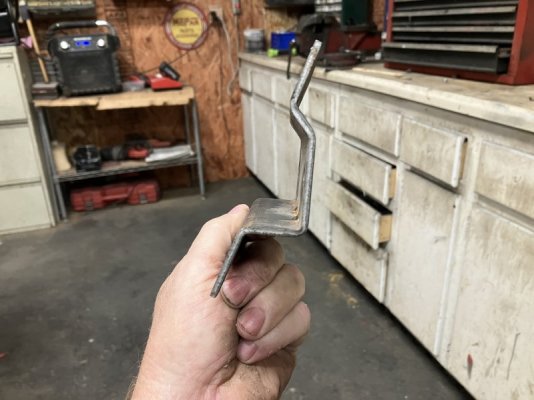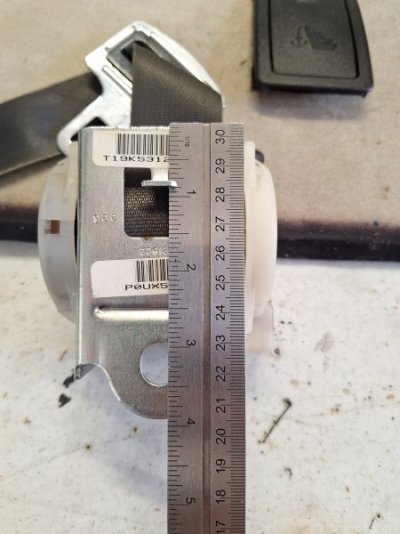I had an idea about how to replicate these retractor mounting bases. I thought back to the welding class that Rich and I took earlier this year. Part of the in class instruction was a rudimentary summary of reading blueprints to then cut and shape the metal objects that we would weld together. My years in construction came in handy there so it was familiar.
My rudimentary math shows that the trunk divider panel sits at approximately 13 degrees from plumb. To get the retractors to sit vertical, the mounting bases have to be shaped to accommodate that 13 degrees.
I already test fitted the bases I made in a reverse engineering sort of manner. In short, I worked with the
lay of the land and just figured it out. Having done that, I made this pattern (out of a grocery shopping bag) that can be laid over the top of a section of sheet metal to then trace the outline and then be bent to the proper shape.
I took the above pattern and traced it to another piece of paper.
It was folded on the lines and taped together.
The traced pattern was then compared to a LH mount.
It is almost identical dimensionally.
I made it with full length flanges that can be cut back for clearance as needed.
This ought to help speed up the process of making these mounts since it skips past the numerous times I had to climb into and out of the trunk.
The degree of the mount may vary slightly on the model of car, the forward rake of the car too. Still, since
@CoronetDarter found that these retractors can still work if tilted a few degrees from vertical/plumb, this ought to work for most people.
One potential issue though….
Making all the bends.
Without a sheet metal brake, you’re limited to bending the metal in a vise or by hand with clamps and hand tools, then tuning up the edges on an anvil or vise.
I’m going to try this now… I suspect that making the multiple bends will be difficult without the versatility of a well engineered sheet metal brake with multiple dies. This would necessitate making the mounts in at least two pieces and then welding them together as I did on the prototypes.
More to come…


















